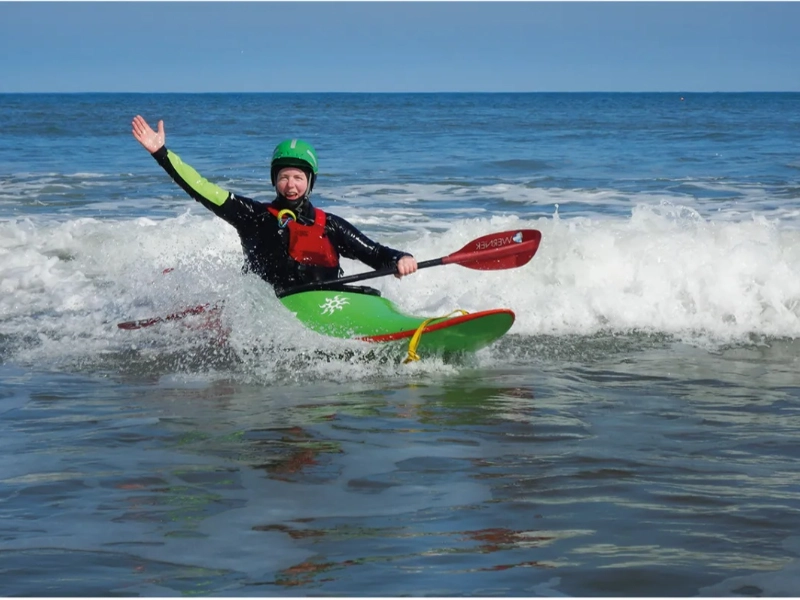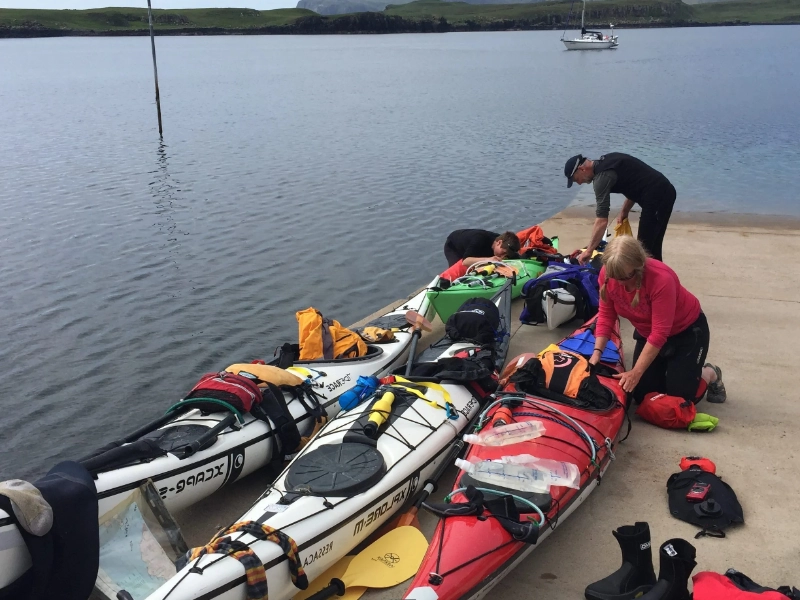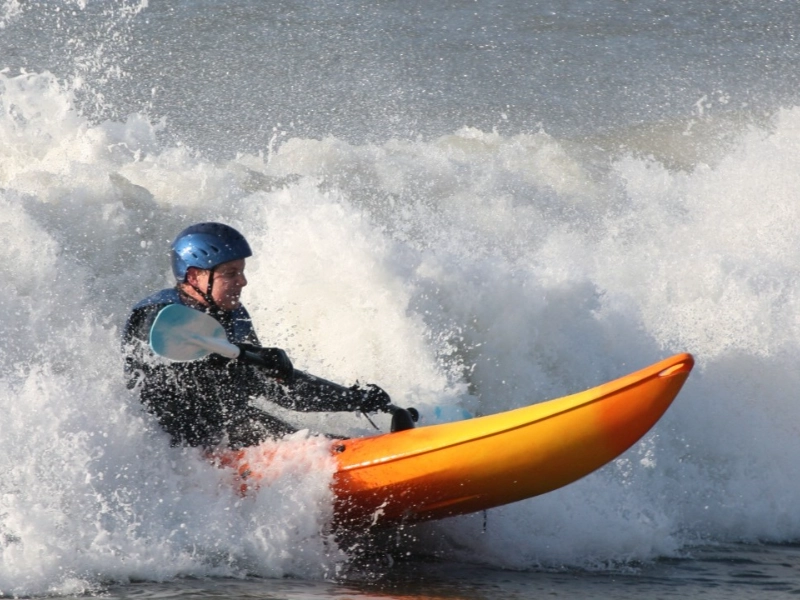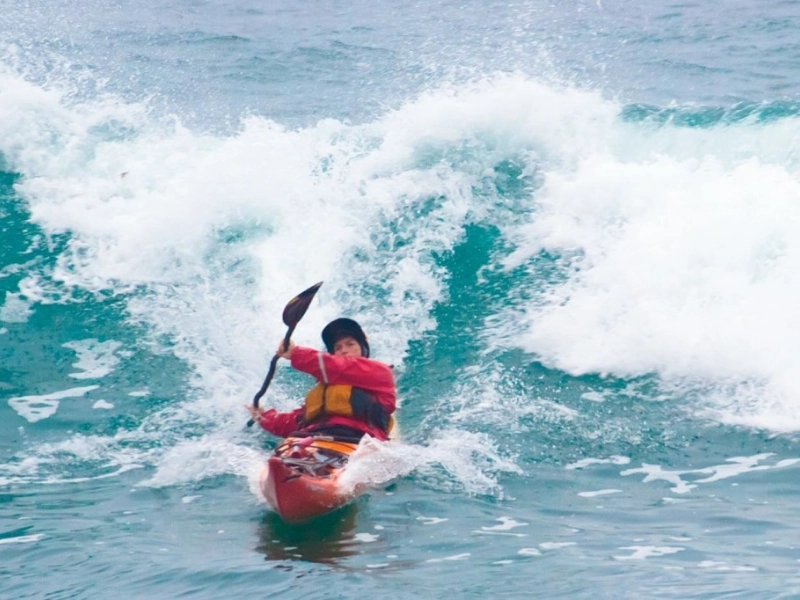A great and exciting ocean paddle activity is surf kayaking. The fundamental is catching them on their crests with strong paddling strokes to get beyond the breaking waves. Discover sophisticated methods that will let you maximise every wave ride via carving, cutbacks, and longer rides. Another essential is a specialised kayak; search for surf boats with a short hull shaped for manoeuvrability.

Surf kayaking depends on a flat bottom kayak with strong stability. For beginners wishing to learn the sport, Eddyline's Sitka series and the Fathom are excellent options. Starting from the coast, study the waves to locate a good launching point. Search for a beach facing the swell less directly to prevent being overrun by a sequence of large, deadly waves. Take also into account the wind conditions. Light to moderate offshore winds assist 'clean up' the water and enable paddlers to navigate and catch waves more easily. Although more expert kayakers can play on larger waves, this needs a greater skill level to safely execute aerial manoeuvres such bottom twists and an Eskimo roll (a technique of righting the kayak without exiting). Anybody who intends to surf large waves has to have a strong, consistent roll. It can stop damage and save a capsize. Know also your proximity to other persons. You might endanger them as well, and they might not see you approaching.

Combining the peace of kayaking with the excitement of surfing is surf kayaking. It calls for the correct environment to be appreciated and a specifically made kayak. Starting with basic purpose SOT kayaks made to incorporate some degree of surf performance, beginners should Among these are the Perception Scooter, Bic Ouassou, Feel Free Nomad/Roamer and the Fatyak Surf. More experienced kayakers can go to more specialised surf vessels built with fins and more rocker for speed in the surf. For individuals who wish to carve turns on the face of a wave, much as board surfers do, kayaks with strong rudders are also available. A helmet and life jacket are the most crucial tools since they guard against being swept onto sandy areas covered with coral or rolled over by strong waves. Wearing a wetsuit is also smart, particularly in chilly conditions. Additional indispensable tools are paddle leashes and a spray skirt.

Safety has to be first concern for surf kayakers. One slip-off can transform an exciting event into a perilous journey. A few easy actions will help to guarantee a safe travel. Always sporting a helmet and personal flotation device comes first. Should you be hurt or caught under a wave, these objects could literally save your life. Additionally crucial is dressing for the temperature and surroundings. Either a wetsuit or a dry suit will keep you warm and guard you from scratches and cuts. Additionally shielding your head in case you fall from your kayak is a helmet. Additionally familiarise yourself with surf etiquette and fundamental marine life. Being respectful of their area is crucial since kayak surfers sometimes share the same waves as board surfers. Remember, too, to arrange a secure departure point before diving into the sea. Your safety depends on knowing where you could go should you find yourself apart from your kayak.
 Although a rookie paddler might begin with a standard kayak and learn the fundamentals, experienced surf kayakers can employ highly specialised kayaks meant to catch waves. These boats feature fins, additional rocker and thigh straps to keep the kayak on should it capize.
Great surfing conditions vary depending on the time of day; therefore, before deciding to go out, one should be aware of how to read the waves. Getting into a surf zone can be either easy or challenging depending on the wind direction and wave period of the swell.
Paddlers should search for lulls in the initial set of breaking waves once they are out in the surf zone to travel into deeper water. Additionally useful are some simple moves like cutbacks and bottom turns that will let you ride a wave longer. Knowing other beachgoers and swimmers is also very important since the wave you are riding may cause your boat to roll over or possibly obstructing path!
Although a rookie paddler might begin with a standard kayak and learn the fundamentals, experienced surf kayakers can employ highly specialised kayaks meant to catch waves. These boats feature fins, additional rocker and thigh straps to keep the kayak on should it capize.
Great surfing conditions vary depending on the time of day; therefore, before deciding to go out, one should be aware of how to read the waves. Getting into a surf zone can be either easy or challenging depending on the wind direction and wave period of the swell.
Paddlers should search for lulls in the initial set of breaking waves once they are out in the surf zone to travel into deeper water. Additionally useful are some simple moves like cutbacks and bottom turns that will let you ride a wave longer. Knowing other beachgoers and swimmers is also very important since the wave you are riding may cause your boat to roll over or possibly obstructing path!